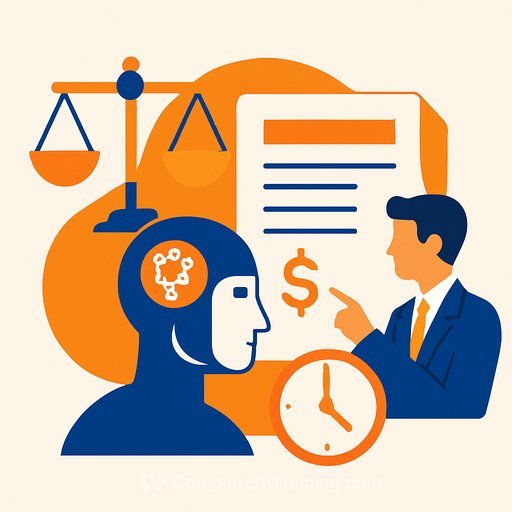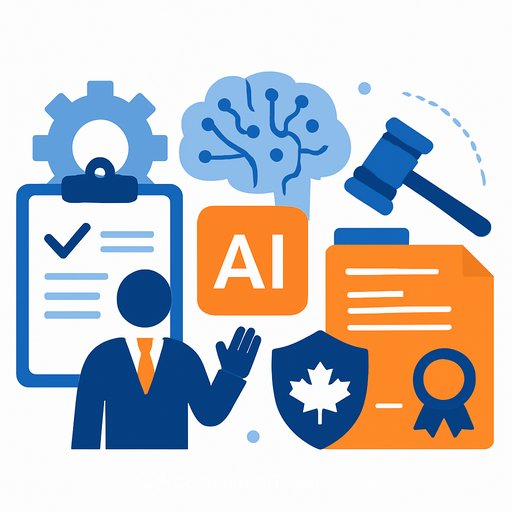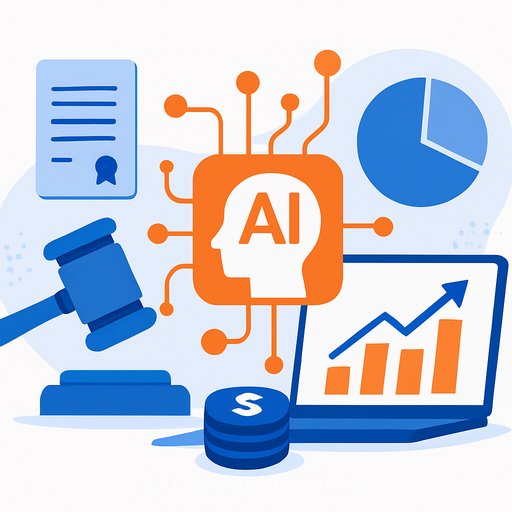AI at NetDocuments Inspire: What Legal Leaders Need to Do Next
At NetDocuments' Inspire Conference, a panel of seasoned observers-Zach Abramowitz, Nicola Shaver, Zach Warren, and Jennifer Poon-laid out where AI is taking legal practice. These are people who advise firms, survey the market, and track what actually moves the needle. Their message: the shift is real, it's already changing behavior, and firms that treat it like normal tech adoption will fall behind.
ROI and AI: Why the Old Math Fails
Traditional ROI models struggle with AI. Much of the value shows up as faster thinking, better drafts, cleaner analysis, and happier people-not neat line items on a P&L. AI also challenges the billable-hour logic: more efficiency can look like less revenue if you don't change how you price.
There's another form of value: prevention. AI-powered analytics can help forecast disputes, spot patterns, and reduce exposure. Historically, "avoided litigation" was hard to price because you can't prove the counterfactual. With the marginal cost of AI close to zero, it becomes a simple decision for CEOs and CFOs focused on risk and legal spend.
If you're serious about measuring AI, swap "hours saved" for these signals:
- Matter cycle time, rework rate, and error rate
- Outcome quality (benchmarked drafts, citations, and reasoning)
- Employee retention, satisfaction, and burnout indicators
- Dispute-avoidance proxies: early issue detection, settlement timing, reserve accuracy
Reference points: firms and legal departments are increasingly tracking non-financial ROI for AI initiatives, a trend echoed in industry research like the State of AI reports from McKinsey. NetDocuments is also building AI into core workflows, pushing usage from the center out rather than the edge in (NetDocuments).
Pricing and Legal Work: The Leverage Model Meets Its Limits
Alternative fees are rising, and AI will accelerate that trend. That requires more than a new pricing sheet-it demands cultural change. Compensation, advancement, staffing, and the entire leverage model need a rethink.
AI-first firms are already doing this. They delegate repeatable tasks to systems, keep costs low, and turn more of their fees into profit. That pressure is real. Meanwhile, in-house teams are insourcing with AI, shrinking outside counsel demand on certain work types.
Rates have covered a lot of inefficiency for a long time. That ceiling is lowering. Expect clients to ask: where's the efficiency, where's the predictability, and why am I paying for time you didn't need?
- Pilot fee models where AI shines: fixed fees, subscriptions, phased pricing, success fees
- Run a "shadow P&L" on key matters to compare hours vs. value-based pricing
- Align partner comp to profitability, client satisfaction, and outcomes-not just hours
Adoption: Individuals Are Moving Faster Than Firms
People are using tools like ChatGPT-style systems regardless of formal policy. That creates a gap: individual adoption outpaces firm adoption. In-house legal is pushing forward, often out of necessity, which will raise the bar for outside counsel.
- Publish a clear AI policy (what to use, where to use it, and red lines)
- Stand up a secure AI workspace with approved models and data controls
- Pick three high-impact use cases: research summaries, first-draft docs, matter status reporting
- Train every role on prompts, review standards, and citing sources
The Big Picture: This Isn't Incremental
The panel agreed: AI that can understand natural language and return useful work product is a profound shift. Yes, there's noise and negativity. But the upside-speed, quality, and new capability-will keep compounding. The firms that build around it will set the standard for service and price.
One Downturn Away from Full-Scale Adoption?
Think back to pre-COVID remote work. The tools existed; most teams ignored them-until they couldn't. A similar trigger in the economy could force a fast pivot to AI-first workflows across legal departments and law firms. Cost discipline has a way of clarifying priorities. Better to prepare now than sprint later.
What Forward-Looking Legal Teams Should Do Now
- Redefine ROI: track cycle time, defect rates, quality scores, and dispute-avoidance signals
- Rebuild pricing: package repeatable matters; cap and phase higher-variance work
- Target use cases: research memos, diligence summaries, clause comparisons, client-ready updates
- Set guardrails: confidentiality tiers, citation rules, human-in-the-loop review
- Upskill: short, role-specific sessions for partners, associates, KM, and ops
- Co-sell with clients: show your AI policy, metrics, and fee options in pitches
- Vendor sanity check: one secure core, a few specialized tools, and clear data boundaries
If your team needs a structured path to build practical AI skills by role, explore these resources: AI courses by job.
Your membership also unlocks:






